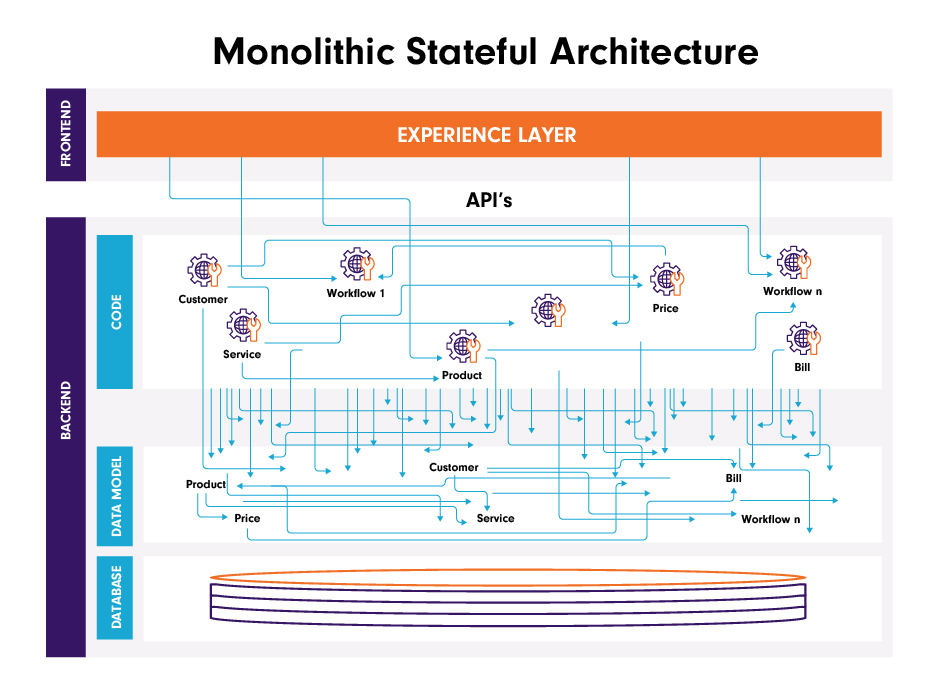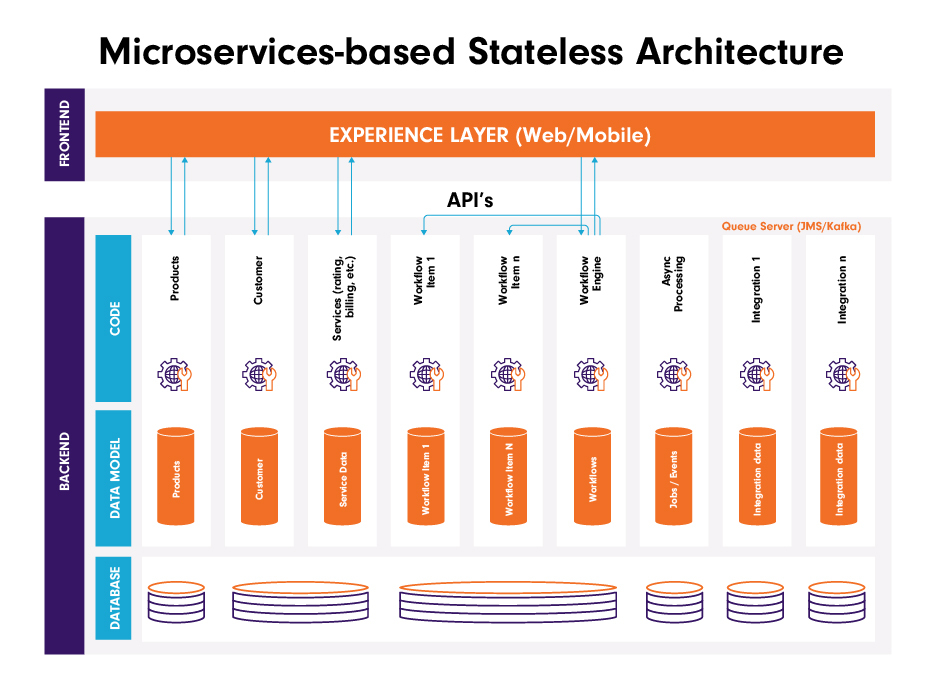The Age of Monoliths
Two basic approaches – loosely coupled versus tightly coupled architectures – have been around for a long time, with the latter being the mainstream until recently. The key to the tightly coupled architecture is that one gets a self-sufficient, “hand-crafted” application with all components closely fitting together. As a result, infrastructure requirements are easy to calculate and manage – and won’t change significantly over time as the application itself is built to remain relatively static.
The static nature of enterprise applications was largely determined by the nature of the businesses. Operational scenarios were fixed without the need to quickly evolve or try out business hypotheses. Data and code relationships would be fixed also, with a single purpose UI on top and a limited number of published API’s mainly required for data sync with other systems.
To add to that, most enterprises would rely exclusively on their own datacenter hosting, and considering hardware resilience requirements, availability and network/connectivity requirements – the cost optimization balance favored tightly coupled systems.

Technology shifts: virtualization & Cloud, rich UI/UX platforms
From the technology perspective, groundbreaking changes were brought about by virtualization & public cloud and the evolution of web/mobile UI/UX platforms that became suitable for rich UI/UX clients.
Virtualization and cloud deployment enabled infrastructure sharing – an essential change in how hardware could be used, managed, – and paid for. It opened doors to free experimenting with software without the need for lengthy and costly infrastructure rollouts, and provided higher performance and availability on demand.
Default browsers – Chrome, Edge, Firefox – in their later versions have become feature rich UI/UX platforms. One no longer depended on having a local desktop client to render frontend functionality – you could now use your own browser on the device of your own choice. Both Android and iOS smartphones and tablets became suitable for feature rich User Experience (UX) for both internal use and for customer facing apps like e-shop and self-service.
These enabled a clear shift to a different paradigm of building applications – a loosely-coupled approach, primarily exemplified by emergence of microservices-based architecture, low-code platforms, flexible integrations and building dynamic web and mobile clients. Applications built that way reap the benefits of capacity-on-demand, agility and availability brought by public cloud, provide modern and optimal customer experience, while being cost-effective and flexible in how they use infrastructure and DevOps resources.
Software landscape shifts
What does the enterprise BSS/OSS appscape look like now? The highest demand and potential for change is in dynamic customer-facing platforms enabling new technologies and the rollout of new business models.
In telecom, large-scale legacy systems for non-evolving services – e.g., incumbent B2C cable provisioning stacks with millions of customers already on the platform – will remain untouched for cost efficiency reasons. Exceptions may be when the deployment infrastructure reaches end of life, like some legacy HP/IBM servers. Such systems will be isolated, supplanted and kept running deep in the back office for as long as the networks they support exist.
For recently rolled out and quickly evolving services – and especially in customer-facing platforms, the transition to the modern microservices-based architecture is already in full swing. Highly dynamic outward-facing systems – e.g., customer and partner portals – and even full stacks from CRM to Provisioning and Revenue Management that enable 5G rollout, new innovative B2B and most importantly MVNO offerings and second brands – are now only seen viable and future proof if built on microservices with process automation at the platform core.
CompaxDigital Microservices-based BSS/OSS Platform
CompaxDigital BSS/OSS Platform represents the modern microservices-based approach to building enterprise applications that are used in mission critical projects for highly demanding customers across various industries.

Essential characteristics of the BSS/OSS Platform include a fully modular architecture with an open data model, the microservices-based backend, and the modern UI client built using REST API’s and supporting the latest AAA mechanisms for both customer-facing and employee-facing applications.
Essential benefits include:
- Easy and quick product extensions and production updates required for the Agile Delivery and Dev(Sec)Ops
- A clear separation between the backend and the experience (frontend) layer, allowing having multiple native clients for optimal user experience (UX)
- Highest scalability and availability as well as optimal infrastructure use especially for public cloud deployment
- Flexible, no-code extensions of data and data relationships/dependencies as required by dynamic quick-win implementations
- Business process flexibility and reuse of automated business operations via microservices-based CompaxDigital Workflow Engine and its library of over 1600 automated operations (workflow items)
To conclude, the microservices-based architecture, as a ground-breaking technological change, has led to a series of other disruptive changes. Namely, the implementation methodology enables Agile Delivery and Strategic Product Management, changing the way the core and custom code is built and maintained.